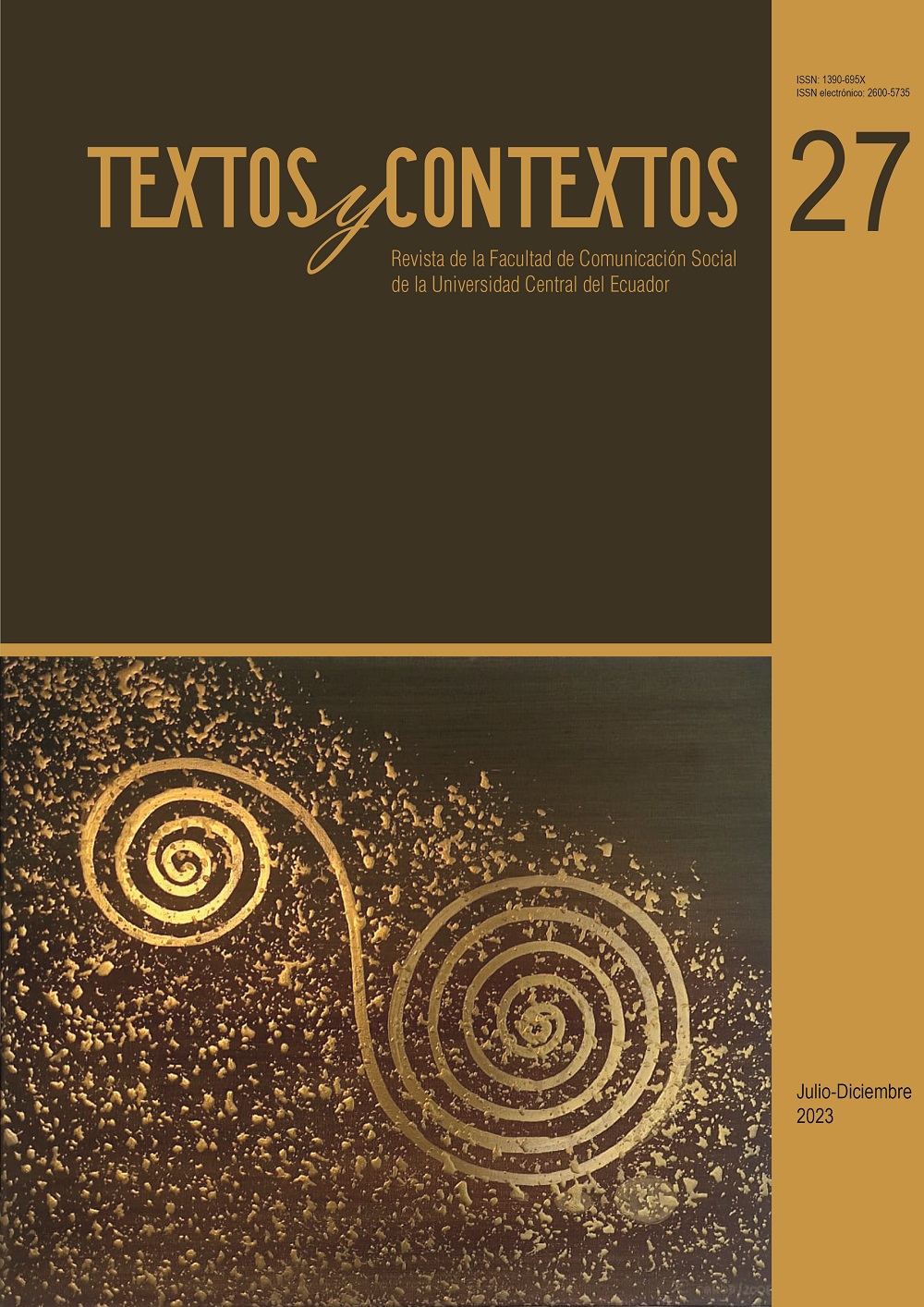La representación social del otro despojado en el cine documental contemporáneo de Pocho Álvarez. Casos de estudio: Muisne, aquí nos quedamos biejo lucho y Hugo, territorio rebelde
Main Article Content
Abstract
This article investigates, from a communicational perspective, the social representation of the other deprived, in the contemporary documentary work of the Ecuadorian filmmaker Pocho Álvarez. The work analyses the documentaries “Muisne, aquí nos quedamos biejo Lucho” y “Hugo, territorio rebelde”, in the context of the oppression generated by transnationals and the Ecuadorian State on the people who are in resistance, who care for life, land and water, and fight against the dispossession. Through the use of the bibliographical-documentary review, the in-depth interview, the critical analysis of the visual text and the triangulation, the article aspires to offer a reflective analysis of both, the theoretical sources and the research object, and to merge communication, representation and cinema as areas of study of mutual enrichment. It is concluded that the social representation of the other deprived can be considered as controversial, since it is the product of the confrontation between antagonistic sides and appears in people or groups that are going through crises or social conflicts. In addition, from the methodological point of view, is posible the multidisciplinary convergence of the fields of social communication, representation and cinema, with a view to obtaining a more thorough understanding of the phenomena or objects of study in which they are involved, respectively.
Downloads
Metrics
Article Details

This work is licensed under a Creative Commons Attribution-NonCommercial 4.0 International License.
References
Abril, G. (2008). Análisis crítico de textos visuales: mirar lo que nos mira. Editorial Síntesis S.A.
Álvarez, Pocho. Comunicación personal, 18 de junio del 2021.
Alonso, M. y Saladrigas, H. (2002). Para investigar en Comunicación Social. Guía Didáctica. Editorial Félix Varela.
Aparici, R., García, A., Fernández, J., Osuna, S. (2006). La imagen. Análisis y representación de la realidad. Editorial Gedisa.
Deleuze, G. (1984) La imagen-movimiento. Estudios sobre cine 1. Editorial Paidós.
Fernández, G. (2014). Dramaturgia. Método para escribir o analizar un guion dramatizado. (Vol 1) Casa de la Cultura Ecuatoriana Benjamín Carrión.
León, C. (2015). El documental ecuatoriano en el nuevo siglo. León y Burneo (Eds.) Hacer con los ojos: Estados del cine documental. 107 - 125. Universidad Andina Simón Bolívar, Cinememoria y Casa de la Cultura Ecuatoriana Benjamín Carrión.
Mouffe, Ch. (1999). El retorno de lo político. Comunidad, ciudadanía, pluralismo, democracia radical. Editorial Paidós.
Nichols, B. (1997). La representación de la realidad. Cuestiones y conceptos sobre el documental. Paidós.
Perera, M. (2005). Sistematización crítica de la Teoría de las Representaciones Sociales. Tesis en Opción al Grado Doctor en Ciencias Psicológicas. SE.SC.SF. Universidad de La Habana.
Puccini, S. (2015). Guión de Documentales. De la preproducción a la posproducción. Editorial la marca editora.
Serrano, J. (2001). El nacimiento de una noción: apuntes sobre cine ecuatoriano. Editorial Acuario.




